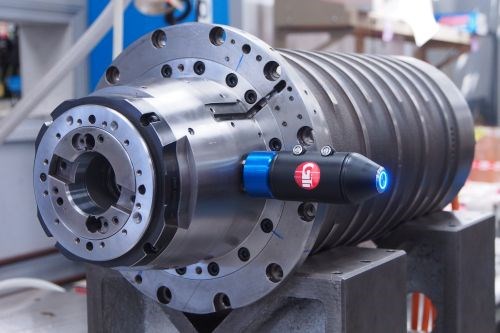Video: Preventing Spindle Failure
Spindles have become more complex over time, operating at higher speeds and offering more features. The associated cost of repairs makes a convincing case for conducting preventive maintenance on your shop floor.
Preventive maintenance is one of those things we all realize we should be doing, because who wouldn’t want to protect their investment in expensive machines and components such as spindles? Still, you often find that people who’ve adopted this approach often learned their lesson after experiencing equipment failure. With advances in spindle technology, repair costs have risen in recent years. Tim Chaten, marketing coordinator at GTI Predictive Technology, recently penned a brief study that may help you avoid running spindles at speeds they weren’t designed to handle.
Mr. Chaten says GTI Predictive Technology recently made a service call to investigate a problem with a dual disc centerless grinder. This year-old grinder had been performing poorly, causing downtime and decreased parts quality. Using GTI’s VibePro iPad vibration tools, the service technician discovered that both spindles in the machine were running much faster than rated for the machine, and faster than the speed displayed in the PLC. Both spindles also were found to have quite a bit of imbalance. Spindle 1 was expected to be running at 900 rpm, while spindle 2 was expected to be running anywhere from 250 to 300 rpm. Both spindles, when tested with GTI's VibePro system, were found to be running at 1,160 rpm.
GTI’s first goal was to fix the running speed of both spindles. The PLC programmers were unavailable to attempt reprogramming, so GTI’s technicians tried compensating on the PLC to correct the speed as a temporary fix. This called for running the first spindle's settings at 450 rpm and the second spindle's settings at 160 rpm, which brought the running speed to 900 rpm and 275 rpm, respectively. Using special weights designed for these spindles, technicians fixed the imbalance problem.
Reprogramming the PLC is still required for a long-term solution. Spindle running speeds should always match the displayed running speed. GTI’s temporary fix involved slowing down the displayed number to match the required running speeds to match grinding specs. Running the PLC in this state for a prolonged period of time could cause other issues such as damaging the rotor or stator.
This example demonstrates how important it is to verify the information displayed by the PLC when diagnosing problems, Mr. Chaten says. The accuracy of running speeds and other parameters from the PLC can be critical to finding a solution to a problem.
Read this article on preventive spindle maintenance and watch this video for a demonstration of how VibePro iPad vibration tools perform.

This Kessler 18,000-rpm spindle is outfitted with a GTI-220 wireless accelerometer for vibration analysis using the VibePro iPad application.











.jpg;maxWidth=300;quality=90)



